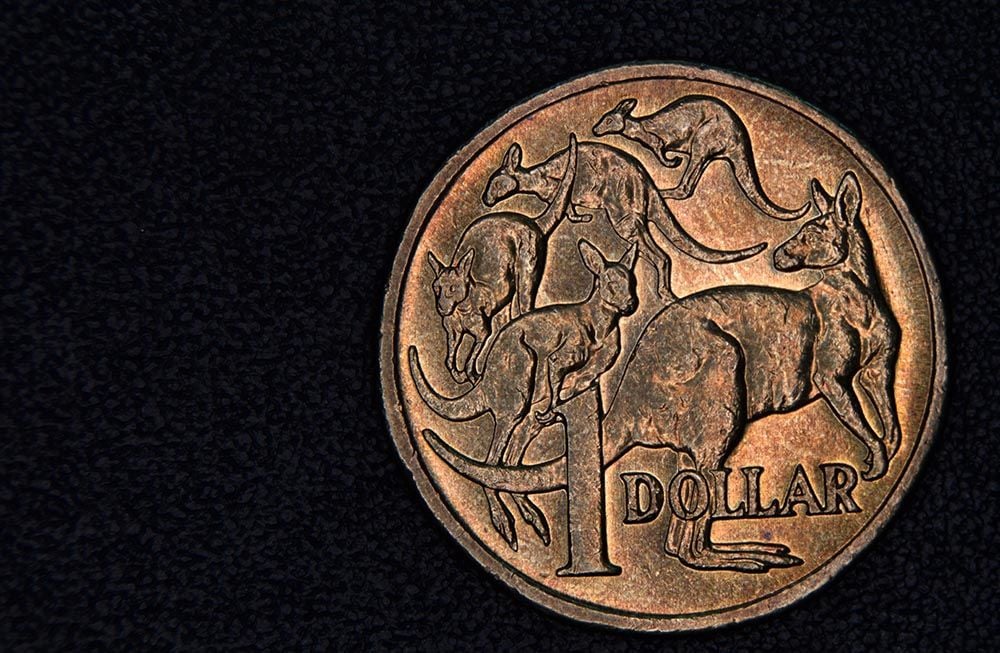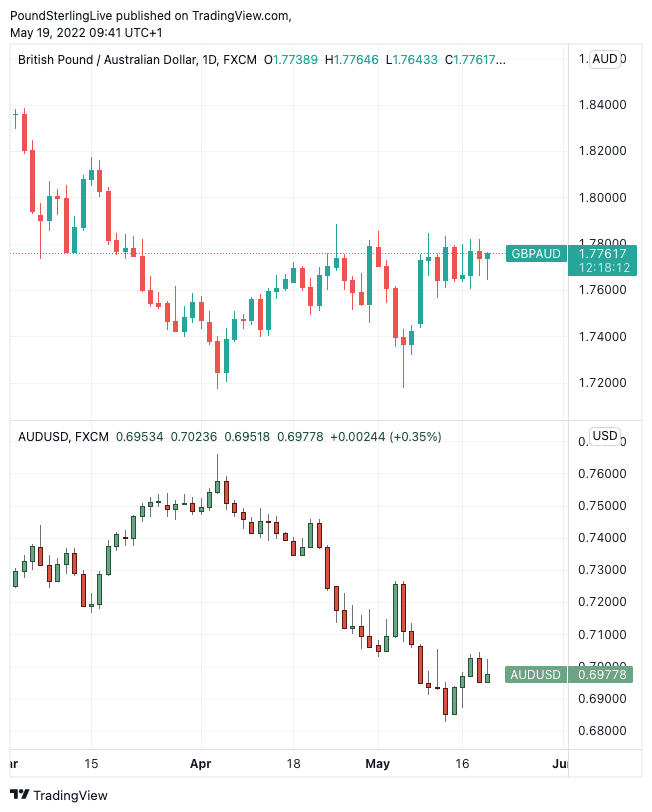Australian Dollar Won't Find Strength from RBA Policy: Crédit Agricole
- Written by: Gary Howes
-
- Aussie employment data misses
- In the same week wage data disappointed
- Could prompt RBA caution on rate hikes
- In turn weighing on AUD
- But a recovery in China could offer support

Image © Adobe Images
This week's Australian wage and employment data validates a "cautious stance" on interest rates at the Reserve Bank of Australia (RBA) and this will offer scant support for the Aussie Dollar, says investment bank Crédit Agricole.
The call comes after Australian employment data disappointed and a day after wage data came in below expectation.
Full-time employment grew by 92.4k jobs in April and part-time employment fell by 88.4k jobs said the ABS, giving a net employment gain of just 4k.
The unemployment rate fell to 3.9% but this was largely down to a decline in the participation rate to 66.3% from 66.4%.
"Australia’s labour market data showed more churning in the labour force than job creation," says Valentin Marinov, Head of G10 FX Strategy at Crédit Agricole.
Above: GBP/AUD and AUD/USD (bottom) at daily intervals. Set your FX rate alert here.
Australia on Wednesday released wage data for the first quarter and the figures disappointed against market expectations: the headline Wage Price Index rose 2.4% year-on-year in the first quarter, up a touch on the previous quarter's 2.3% but below the market expectation for 2.5%.
The data has lead some economists to suggest a 50 basis point hike at the RBA at next months policy meeting was now unlikely given the RBA is particularly attuned to wage market dynamics when considering where to move interest rates.
The trajectory of the labour market therefore asks questions as to how realistic the market's current expectations for the number of rate hikes the RBA can deliver in 2022 are.
Currently the market anticipates 250 basis points of hikes over the remainder of 2022, more than any other developed market central bank.
The scope for a significant reduction in this pricing therefore beckons, and analysts say this could drag on the Aussie.
"It continues to suggest the RBA hiking rates will not be a source of strength as the central bank will not match the aggressive rate hikes of other central banks," says Marinov.
There was however no significant negative reaction displayed by the Aussie Dollar in reaction to the employment figures, suggesting for now invests are not yet willing to price RBA expectations materially lower.
"Combined with yesterday’s soft wages growth data, today’s labour market data suggests the RBA will be able to continue raising rates in a steady manner – we expect by 25bp at its remaining meetings this year," says Marinov.
Crédit Agricole expects Australian labour force participation to rise in the coming months as Australia’s international borders have re-opened for foreign students and tourists as well as migrants, which could help ease labour market tightness.
But for the Australian Dollar, domestic wage and employment figures must firm up over coming months if the RBA is to deliver on lofty hike expectations.
There is now a material downside risk to the currency should the RBA push back against current market expectations by pointing at the lacklustre wage figures and jobs growth.
Global sentiment meanwhile continues to exert a strong influence on the Australian Dollar with the currency finding some support this week from news Shanghai is beginning to loosen Covid restrictions, offering hope the world's second largest economy will recover over coming months.
China is Australia's most important export market and the pursuit of a zero Covid strategy by Chinese authorities has dented economic demand, prompting market caution towards the Aussie Dollar.
The currency is therefore particularly prone to a deterioration in broader investor sentiment, particularly when China is a trigger for these shifts.
Any improvements in sentiment regarding China could therefore ultimately benefit the Aussie just as investors fret about RBA policy shifts, offering some protection against a major move lower.






